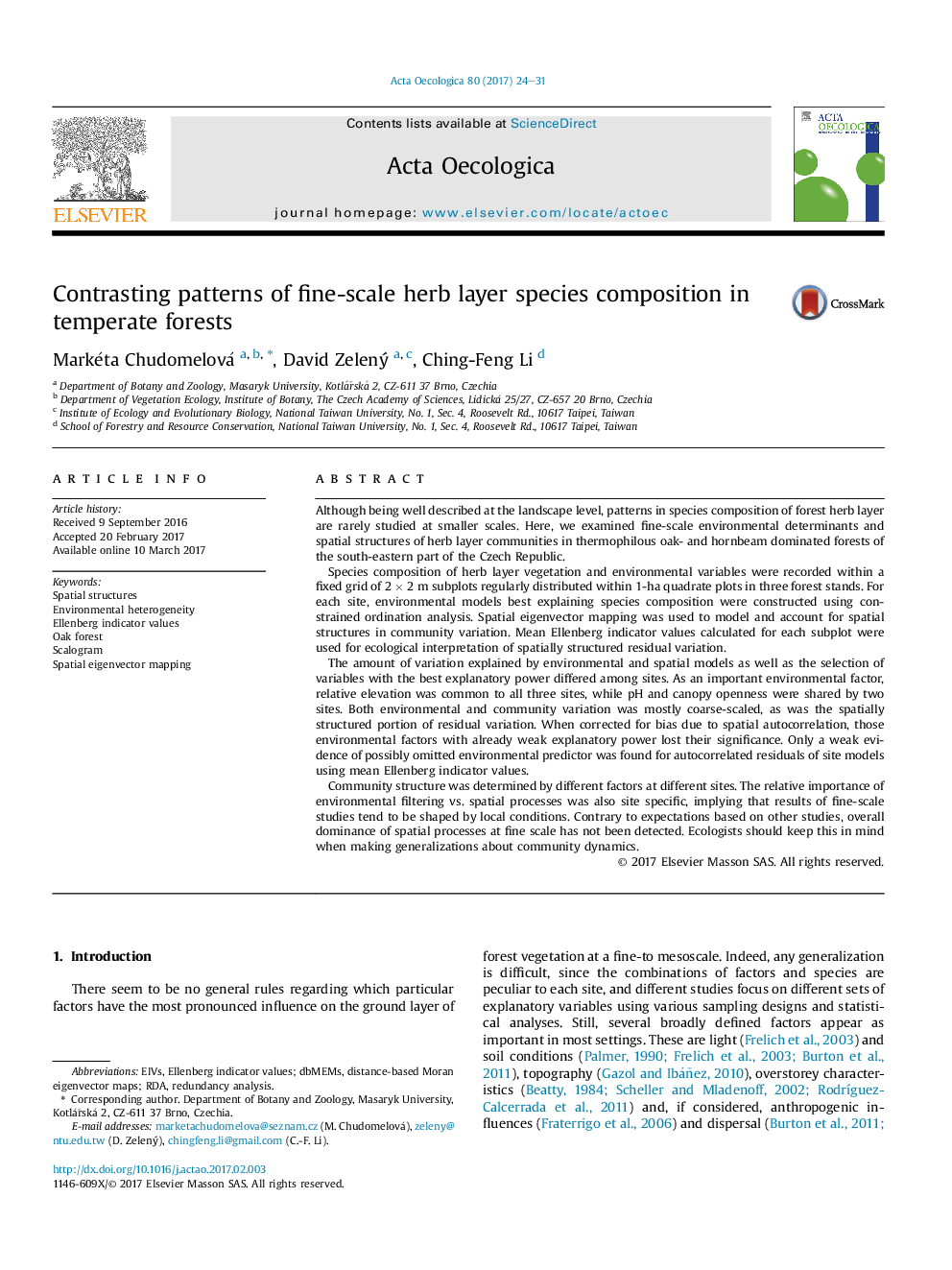| کد مقاله | کد نشریه | سال انتشار | مقاله انگلیسی | نسخه تمام متن |
|---|---|---|---|---|
| 5742474 | 1617692 | 2017 | 8 صفحه PDF | دانلود رایگان |
- Fine-scale patterns of herb layer species composition were analyzed in three temperate forest stands.
- Both species composition and environmental factors were spatially structured.
- The most important environmental drivers were topography, soil pH and canopy openness.
- The importance of environmental filtering vs. spatial processes was influenced by local conditions.
Although being well described at the landscape level, patterns in species composition of forest herb layer are rarely studied at smaller scales. Here, we examined fine-scale environmental determinants and spatial structures of herb layer communities in thermophilous oak- and hornbeam dominated forests of the south-eastern part of the Czech Republic.Species composition of herb layer vegetation and environmental variables were recorded within a fixed grid of 2Â ÃÂ 2Â m subplots regularly distributed within 1-ha quadrate plots in three forest stands. For each site, environmental models best explaining species composition were constructed using constrained ordination analysis. Spatial eigenvector mapping was used to model and account for spatial structures in community variation. Mean Ellenberg indicator values calculated for each subplot were used for ecological interpretation of spatially structured residual variation.The amount of variation explained by environmental and spatial models as well as the selection of variables with the best explanatory power differed among sites. As an important environmental factor, relative elevation was common to all three sites, while pH and canopy openness were shared by two sites. Both environmental and community variation was mostly coarse-scaled, as was the spatially structured portion of residual variation. When corrected for bias due to spatial autocorrelation, those environmental factors with already weak explanatory power lost their significance. Only a weak evidence of possibly omitted environmental predictor was found for autocorrelated residuals of site models using mean Ellenberg indicator values.Community structure was determined by different factors at different sites. The relative importance of environmental filtering vs. spatial processes was also site specific, implying that results of fine-scale studies tend to be shaped by local conditions. Contrary to expectations based on other studies, overall dominance of spatial processes at fine scale has not been detected. Ecologists should keep this in mind when making generalizations about community dynamics.
Journal: Acta Oecologica - Volume 80, April 2017, Pages 24-31
